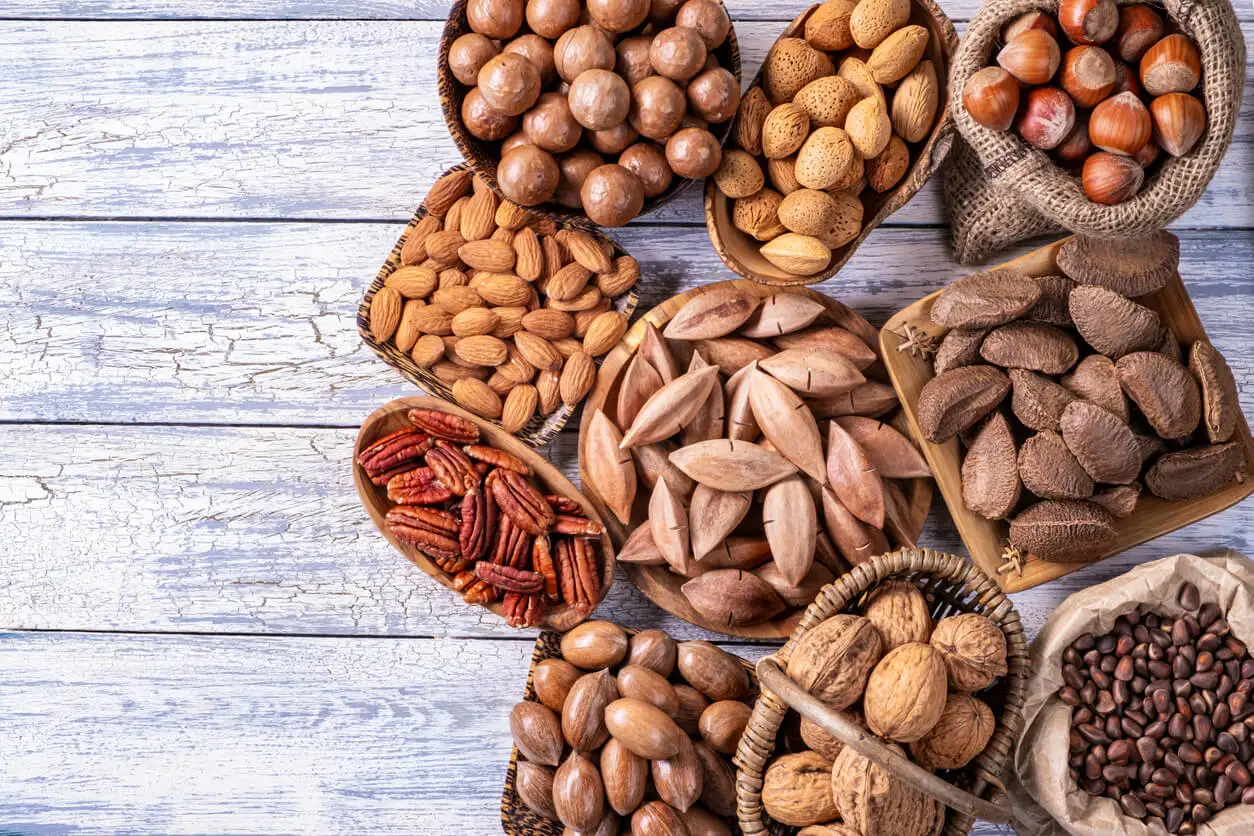Pili Nuts: Nutritional Properties and Benefits


Written and verified by the nutritionist Saúl Sánchez Arias
Pili nuts are very beneficial and can be included in your diet on a regular basis. However, they’re unknown to most people. So we’re going to tell you about all the properties of these unusual nuts with excellent organoleptic characteristics.
Before we start, it should be noted that the daily intake of nuts is recommended by most nutrition experts. They’re foods that are considered to have a high nutritional density. They provide proteins, quality fats, and many vitamins and minerals.
They’re quite energetic, and for this reason, it’s important not to overdo it when eating them.
What are pili nuts?
Pili nuts are cultivated in Australia, New Guinea and Southeast Asia. They have a different nutritional profile than other products of the same group, as they’re a source of saturated and monounsaturated fats.
On the other hand, they contain a large amount of magnesium, so they help to cover the daily requirements of this element.
They can be consumed raw or after a light roasting. They usually have a very soft and creamy texture, and melt in the mouth after biting them.
In fact, they’re even whiter than macadamia nuts. They combine very well with fermented dairy products, improving their nutritional content.

Get to know more: Nuts Shown to Improve Sperm Quality
Nutritional information
From a nutritional point of view, it should be noted that pili nuts are a source of fat and protein. They have 31 grams of lipids per 100 grams (4 oz) of product and almost 11 grams of protein.
However, the proteins are of low biological value. They don’t contain all the essential amino acids. However, they will help to complete the daily requirements.
As far as micronutrients are concerned, pili nuts have a high B vitamin content. They also contain minerals, such as manganese, magnesium, phosphorus, copper, zinc, and iron.
You may also be interested in: 6 Varieties of Nuts that Boost Your Energy
Benefits
Regular consumption of pili nuts can have several positive effects on the body. For example, they would positively impact sleep physiology, thanks to their magnesium content. This element has been shown to help combat disorders associated with rest.
Moreover, they can produce a powerful antioxidant effect. This is due to the phytochemicals they contain, which neutralize the formation of free radicals. This effect is related to a lower incidence of chronic and complex pathologies.
We mustn’t forget that, thanks to these nuts, it’s possible to complete the daily protein requirements. Proteins are crucial in order to ensure that lean mass is kept in good condition. According to research published in the journal Annals of Nutrition & Metabolism, sedentary people should ingest at least 0.8 grams of protein per kilogram of weight per day.
Finally, we must bear in mind that pili nuts also provide calcium in significant quantities. We’re talking about a very important element that can prevent bone degeneration over the years.

Pili nuts are a beneficial nut
Pili nuts are not very well-known all over the world. Even so, they are rich in nutrients.
For this reason, their consumption is recommended. In addition, they’re very tasty and have a nice consistency, with a creamy and silky texture, easy to chew.
All cited sources were thoroughly reviewed by our team to ensure their quality, reliability, currency, and validity. The bibliography of this article was considered reliable and of academic or scientific accuracy.
- Cao Y, Zhen S, Taylor AW, Appleton S, Atlantis E, Shi Z. Magnesium Intake and Sleep Disorder Symptoms: Findings from the Jiangsu Nutrition Study of Chinese Adults at Five-Year Follow-Up. Nutrients. 2018;10(10):1354. Published 2018 Sep 21. doi:10.3390/nu10101354
- Neha K, Haider MR, Pathak A, Yar MS. Medicinal prospects of antioxidants: A review. Eur J Med Chem. 2019;178:687-704. doi:10.1016/j.ejmech.2019.06.010
- Richter M, Baerlocher K, Bauer JM, et al. Revised Reference Values for the Intake of Protein. Ann Nutr Metab. 2019;74(3):242-250. doi:10.1159/000499374
This text is provided for informational purposes only and does not replace consultation with a professional. If in doubt, consult your specialist.








